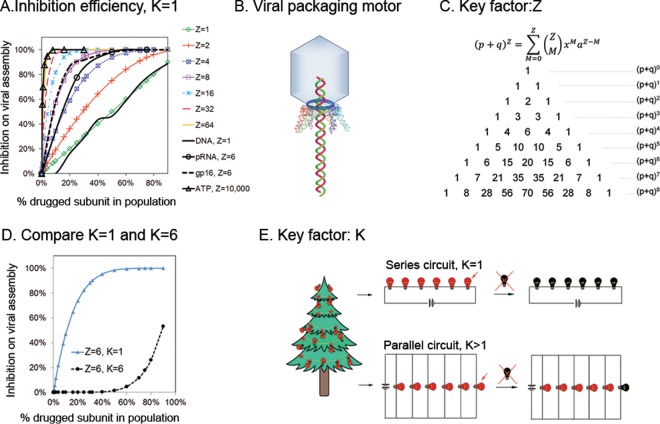FIG 1.
Drug inhibition efficiency is correlated with the stoichiometry of the targeted biocomplex. (A) Targeting 10,000 subunits of ATP showed the strongest inhibition efficiency, compared to those of the 6-subunit pRNA or gp16 and the 1-subunit genomic DNA. (B) Illustration of the viral DNA-packaging motor. (C) One key factor regarding drug potency is the stoichiometry of the homomeric complex serving as a target: the ratio of the functional complex can be calculated from Yang Hui's triangle. (D) Comparison of drug inhibition efficiencies in a complex with a Z equal to 6 and a K equal to 1 and with a Z equal 6 and a K equal to 6. Here, K is the number of blocked subunits required to inhibit the function of the whole complex target. (E) Illustration showing that K is a key factor for drug potency. When K = 1 as in the ATPase sequential motion, the system is similar to a series circuit of Christmas lights; one broken bulb will turn off the whole chain. When K > 1, the chain will not be completely turned off until all bulbs inside the parallel circuit are broken.

